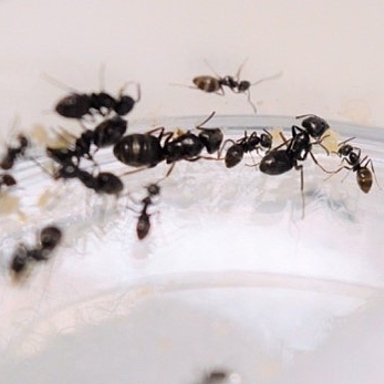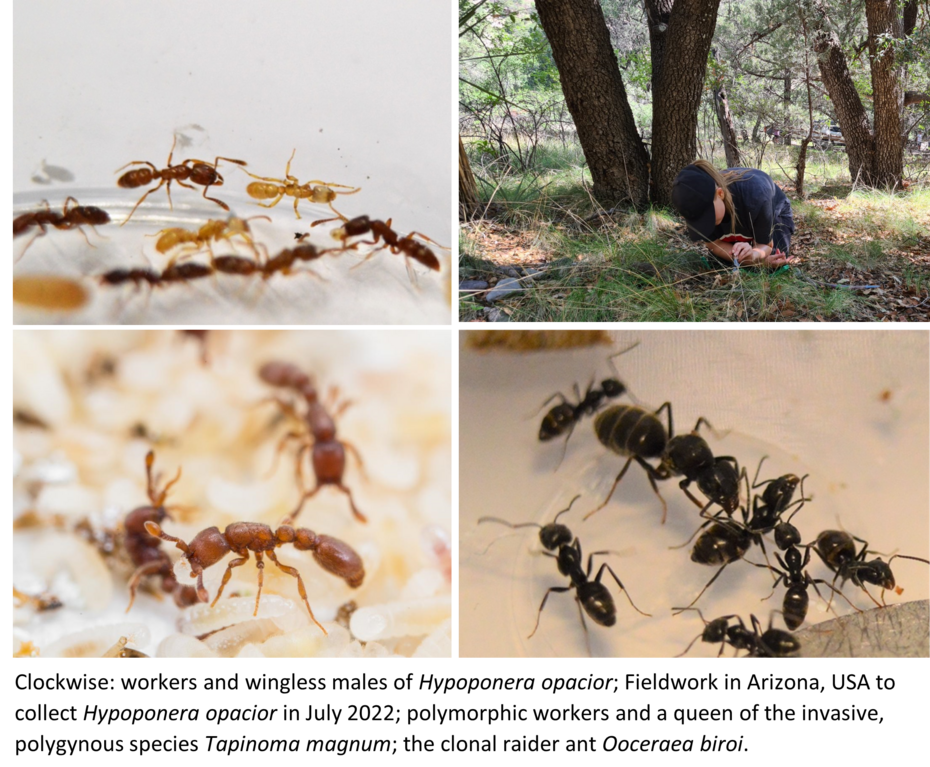Project A.10

- PhD student: Anna Lenhart
- Supervisor: Susanne Foitzik
- Co-Supervisors: Romain Libbrecht
- Further TAC-members: Barbara Feldmeyer (Senckenberg BiK-F)
- Research Group
Social insects like ants have the ability to reverse the trade-off between longevity and fecundity, as the most fecund individual within a colony, the queen, is also the most long-lived one. A similar pattern has also been found in workers after the queen has been removed from the colony. We are investigating the gene regulatory mechanisms of longevity, fecundity, sociality and ageing in so far three different ant species.
Most living organisms face a trade-off between fecundity and longevity. Typically, animals of most species die earlier the more offspring they reproduce. This evolutionary trade- off is mediated through molecular pathways with opposing effects on reproduction and body maintenance. Social insects like ants seemingly have the ability to overcome this trade-off. In particular, queens in social insect colonies are not only the most fecund ones but also the most long-lived ones. In contrast, workers do not or certainly cannot reproduce and live shorter. Even though the absence of worker reproduction is a characteristic trait of eusocial species, workers of many social insect colonies retain a certain reproductive potential. In most ant species, workers cannot mate, but can lay haploid, male-destined eggs. Indeed, under queenright conditions worker reproduction is rare. Especially in monogynous ant colonies (= single queen colonies), if the queen dies, the lifespan of a colony is limited to that of the remaining workers, since no female eggs can be laid. In this situation, workers may develop their ovaries and start reproduction. If they do so, reproduction has strong effects on worker physiology and immunity as it has been shown that they can become more resistant to oxidative stress and often live longer. Moreover, gene expression changes strongly within different tissues (brain and fatbody) of workers after queenloss. The ability of ants to reverse the trade-off between longevity and fecundity, makes them a promising system to investigate the underlying gene regulatory mechanisms of ageing and led us to ask many questions on longevity, ageing, fecundity, and sociality.
Which physiological and genetic factors affect survival and fecundity within different ant species? Is there a link between sociality, ageing and fecundity and what are the underlying molecular mechanisms behind it? How does age and fecundity affect gene expression, and do we find differences in gene expression between reproductive and non-reproductive individuals?
In this project, we mainly focus on three different ant species to answer our research questions: Tapinoma magnum, Ooceraea biroi and Hypoponera opacior. All of these species exhibit different life history strategies and partly exhibit an unusual biology. Our aim is to investigate their survival dependent to social composition and reproductive status as well as their response to oxidative stress. Further, we are analyzing gene expression differences via RNAseq analyses based on the social composition and, if applicable, age.
